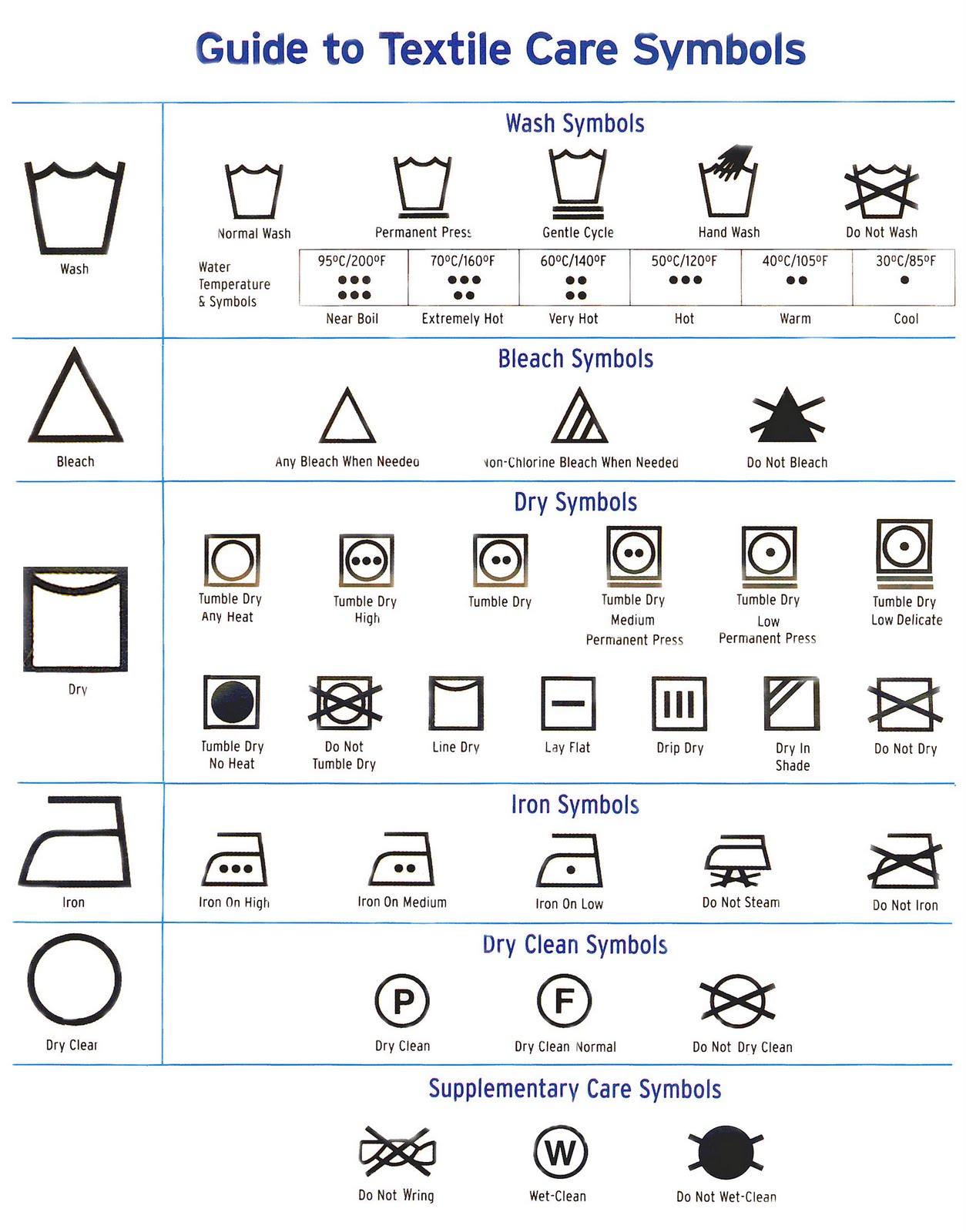Circle or Square? The Language of Laundry
There are many, many different languages in the world; however, spoken languages, body languages, and written languages all serve the same purpose, to communicate. If you were traveling to a different country you’d try to learn the language, right? What if you were traveling to the laundry room? Laundry care symbols may seem like a foreign language, but if you want to look your best, it is a language worth knowing.
At one time, before acrylic, polyester and washing machines came along, people could easily identify a wool or cotton garment and wash accordingly. But in the same way a culture develops new words to adapt to changing technologies (e.g., internet speak such as, lol and brb), the Fair Trade Commission saw fit to open a channel of communication from the manufacturer to the consumer, and later expand the written language of laundry to include pictograms. The five basic symbols in the US are: a washtub with a water wave to represent the washing process; a triangle for bleaching; a square for drying; an iron for—you guessed it—ironing; and a circle for dry cleaning.

There are modifiers to help clarify the instructions, because in any language it is fairly important to be specific. “Meet me at the car” is hardly a helpful statement in a full parking lot. But, add in a few adjectives and adverbs and even the most directionally challenged person can locate the vehicle in question. An “x” symbol can be super imposed on any symbol to indicate it could damage the garment. A system of dots can be used within the symbols to indicate temperature. Though a six dot system exists, a more common three dot system generalizes the temperatures into as many categories: three dots for hot; two for warm; and one dot means cool. Lines added to the symbols also change the meaning. Take bleach for instance, if chlorine bleach cannot be used safely, then diagonal lines are added within the bleaching triangle.
Syntax plays an important part in the language of laundry as well. For clothing that needs to be laundered, at least four symbols must be used in the following order: washing, bleaching, drying and ironing. Adding a warning against dry cleaning may be added to the end, if appropriate.

Though it is said that one can make time spent doing chores pass quickly by imagining something else, after you learn to read your specific dialect of “launder-ish” you won’t have to pretend to be Indiana Jones reading hieroglyphics anymore. You’ll already be fluent in the language of looking good.
What languages have you found hiding in plain sight?
